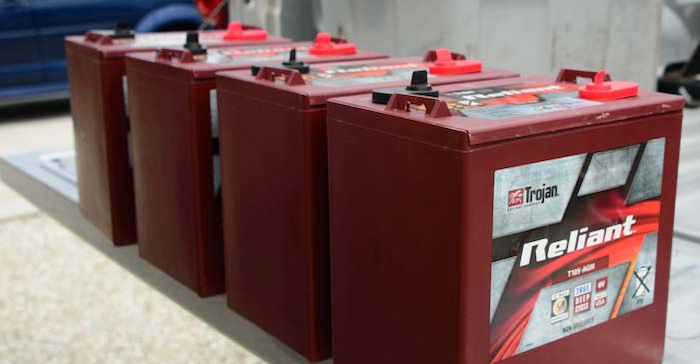Owning a caravan can seem like a lot of work. Although this is true, as caravans require quite a bit of maintenance, the benefits you get outweigh all the cons. For example, when travelling you get to choose where and when to stop, even for the night. You don’t have to pay for a hotel or motel room, you can just spend the night in nature.
Caravanning makes for a care-free holiday that you can alter at any time you like. You don’t have to follow a route if you don’t want to and you get to explore your favourite places on your own accord. Caravanning can be done with friends and family too and it can be a more cost-efficient form of holiday. In order for all this to be possible though, your caravan will need to be equipped with a deep cycle battery.
Deep Cycle Batteries

What Are They?
Unlike the regular 12V battery in your caravan, a deep cycle battery is not used to power your camper home. The reason why you need a deep cell battery is to power your fridge, AC, microwave, laptop and other appliances and devices. You can’t use a regular car battery to power them as a deep cycle battery solar charger does so with a continuous discharge which is not possible with a standard car battery.
Benefits
The benefits of using a deep cycle battery are many with one of the most important being their long lifespan. This is thanks to their deep discharge rates and the higher number of discharge cycles. Their often rugged construction makes deep cycle batteries durable while they’re also highly efficient. When you want to bring all of the conveniences found in your home into your caravan, a deep cycle solar battery is a must. Other reasons for this being the very little maintenance and lightweight properties of deep cycle batteries.
Types of Deep Cycle Batteries
Flooded
The oldest car battery you’ll find is available as a deep cycle version too and it is also known as a lead-acid battery. Flooded deep cell batteries got their name due to the fact that the plates that exchange electrons sit submerged in the electrolyte. In this case, the plates are made of lead and the electrolyte is a mix of water and sulphuric acid. But because of their construction, flooded deep cycle batteries produce gasses.
This is known to lower the electrolyte level which is why you need to top up the battery. Because of this, lead-acid batteries have a usable capacity ranging from 30% to 50%. This is how much of the battery can be recharged once it gets fully discharged. This causes the charging period of a flooded battery to be split up in stages which makes the battery prone to over and undercharging. The charging efficiency of lead-acid deep cycle batteries is also affected because of this which brings it to around 75% – 85%.
AGM

An absorbent glass mat deep cycle battery is a type of VRLA (Valve Regulated Lead Acid) battery that has thin mats made of fibreglass as well as lead plates. The mats are placed between the plates and the former absorb the electrolyte which means the solution is not moving around. This is why AGM batteries can be mounted in any orientation you want as there’s no risk of spilling the electrolyte.
This damping effect of the fibreglass mats makes an AGM deep cycle solar battery both vibration and shock-resistant. AGM deep cycle batteries are able to handle cold temperatures well and they have low internal resistance. The latter means that an AGM deep cell battery charges faster than a flooded one while having an 80% depth of discharge. AGM batteries are known to have a charging efficiency of 95%.
Lithium

The latest advancement in deep-cycle technology is known as lithium-ion. Lithium batteries, when compared to flooded, are 30% lighter and have a usable capacity between 80% and 100%. Lithium-ion deep cycle batteries have the fastest recharge rate as well as an extremely long lifespan. This is because their cycle life ranges between 2000 and 2500 charge cycles.
There’s a unique approach lithium-ion batteries have and this is the fact that they provide constant voltage no matter the rate of discharge. This means the lights in your caravan won’t dim and then go out, they will continue to provide light as they did in the beginning until they turn off. The most common lithium deep cycle battery solar charger is LiFePO4 or lithium iron phosphate and it can be used both as a solar energy bank and for backup power systems.
Gel
A gel cell battery is similar to an AGM battery as it too is a VRLA unit. The difference between gel and AGM deep cycle batteries is that instead of a liquid electrolyte, the former uses a gelled electrolyte, hence the name. This electrolyte is still made of water and sulphuric acid but it is suspended in a silica agent.
This construction makes gel batteries have a charging efficiency between 85% and 90% but they cannot fast charge. Also, gel cell batteries are sensitive to overcharging and they can encounter irreparable damage when overcharging occurs. But despite that gel batteries are spill-proof and maintenance-free while being able to tolerate heat quite well.